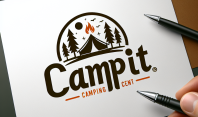Planning a tenting or camping trip can be an exciting adventure, but finding the perfect location can sometimes be a challenge. Choosing the right tenting or camping site can make or break your outdoor experience, so its important to do your research and consider several factors before making a decision. One helpful tool in this process is mapping out potential sites to ensure you find the best spot for your next outdoor adventure.
There are a few key factors to consider when selecting a tenting or camping site. First, think about the type of scenery you want to experience. Some people prefer beachside campsites with stunning ocean views, while others may enjoy forested areas with plenty of wildlife and hiking opportunities. Consider whether you want access to water for swimming or fishing, or if you prefer a more secluded spot away from other campers.
Another important factor to consider is the amenities available at the campsite. Some campgrounds offer more luxurious amenities like showers, electricity, and even Wi-Fi, while others may be more primitive with just a fire pit and picnic table. Think about what amenities are important to you and choose a site that meets your needs.
Once you have a general idea of the type of camping experience youre looking for, its time to start mapping out potential sites. There are several online resources that can help you find and compare campgrounds in your desired area. Websites like Recreation.gov, Reserve America, and Campendium offer detailed information on campgrounds across the country, including user reviews and photos of each site.
When mapping out potential sites, consider the location of each campground in relation to the activities you want to do. If youre planning to go hiking, fishing, or swimming, choose a campground that is close to the trails or water access points. If youre looking for a more secluded experience, consider sites that are further away from major roads or popular tourist destinations.
Once youve narrowed down your options, its important to consider the specific features of each site. Look for campsites that are level and spacious enough for your tent or RV, with easy access to amenities like restrooms and potable water. Pay attention to the privacy of each site and choose a spot that aligns with your comfort level some people prefer to be closer to the action, while others may prefer a more secluded spot.
Creating a visual map of potential campsites can help you compare and contrast different options to find the perfect spot for your next adventure. Start by plotting each campground location on a map and include important details like amenities, activities, and proximity to water sources. This will give you a clear visual representation of each site and make it easier to choose the best option for your needs.
When mapping out potential sites, consider the season and time of year you plan to camp. Some sites may be overcrowded during peak seasons like summer and holidays, while others may offer discounted rates or special events during the off-season. Take into account weather patterns and consider how they may affect your camping experience for example, some sites may be prone to flooding or extreme temperatures during certain times of the year.
In addition to online resources, consider reaching out to local outdoor enthusiasts or camping groups for recommendations on the best tenting and camping sites in your area. These individuals may have firsthand knowledge of lesser-known spots or hidden gems that arent widely advertised online. Joining online forums or social media groups dedicated to camping can also be a great way to connect with like-minded individuals and get insider tips on the best spots for your next adventure.
Mapping out potential tenting and camping sites is an essential step in planning a successful outdoor adventure. By considering factors like location, amenities, and seasonality, you can ensure you find the perfect spot for your next camping trip. Whether you prefer beachside campsites, forested areas, or secluded spots, taking the time to research and map out potential sites will help you make the most of your outdoor experience.


leave a comment